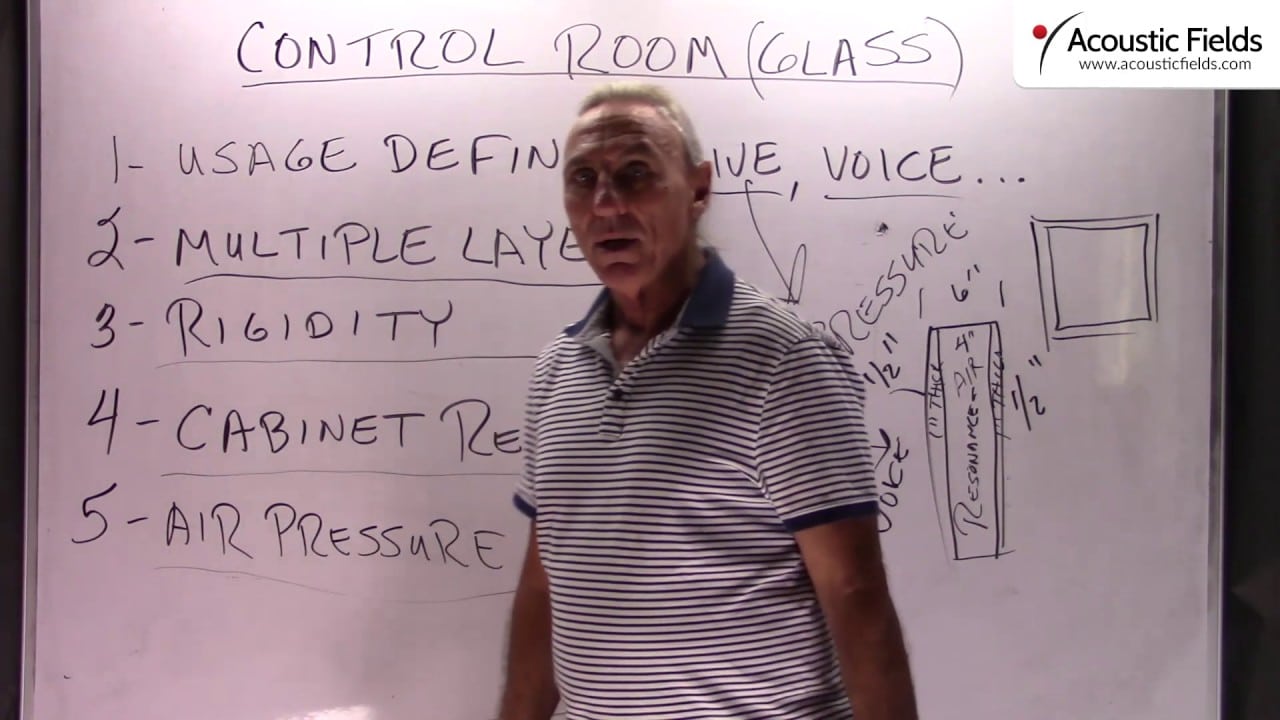Today we’re going to talk about control room and the glass that is the necessary evil. So first we have to decide what we’re going to use on the other side of the glass, if we’re in the control room then we know that maybe it’s a live room on the other side, maybe it’s voice on the other side, we needed to define that because the Live Room obviously is going to have a lot of pressure. So we have a Live Room here and our control room here then the glass here, it is going to have a lot of pressure if we got drums, amplified sound reinforced equipment inside of here. If it’s just vocals well that’s a little bit different story, a lot less pressure so a little bit different design on the glass here.
So first thing we have to use if we’re dealing with a lot of pressure is multiple layers so we set our cavity up so to speak with two pieces of glass ok so we have all this pressure here from the Live Room. Let’s just say it is drums striking our glass, so we like to use one inch thick glass because we found that to be the most rigid so we use one inch thick on both sides and then that gives us an air buffer between the two pieces of glass and our glass units usually run around six inches so your air space inside is four with the two ones. So all the sealed unit built in a frame and then what we do for the inside of it, we line the inside of it with foam so that controls all the residences inside this cavity because we do have air inside of it.
So rigidity, the thickness of the glass especially in a Live Room, if it’s voice you know we can get away with a lot less thicker glass, we could use half inch here. So rigidity is our first requirement, multiple layers, controlling the cabinet residences by lining the inside of the window cavity with foam and then here’s something really interesting, we’ve done this before. What causes noise? The air moving inside the cabinet so if you take the air out, put a vacuum hose here and you drain the air out with the back, lower the amount of air in the cabinet, you have less residences because you create kind of a partial vacuum. And windows do this all the time, especially in cold and warm environments.
So without air between them you have less movement of the molecule so you have less interaction with the two pieces of glass going on. Control Room glass – got to define what we’re doing with it because live, voice they all have different pressure levels. Multiple layers – make sure you have the right rigidity for the glass, control the internal cabinet residences because you’re creating a cabinet and if you really want to get sophisticated drop some of their air out of it.
—
This is an unedited transcript from our video series from Acoustic Fields. There will be some errors in grammar and sentence structure that occur during this translation process.
For complete understanding and comprehension, please view the video which is included in this text. For any additional information regarding this topic or others relating to room acoustics, please contact us directly at:
P: 520 – 392 – 9486








Use whatever floor type suits your usage. Carpet should have a carpet pad under the carpet. Hardwood floors should have…
Hello. This article mentions choosing a sound absorbing carpet and a pad. Could you please give examples of products? I…
All noise must be measured for frequency and amplitude. The barrier design chosen to fix the noise issue is dependent…
Hi, Really interesting article. I've just had a prototype water filtration and softening (using filters, not salt) system installed in…